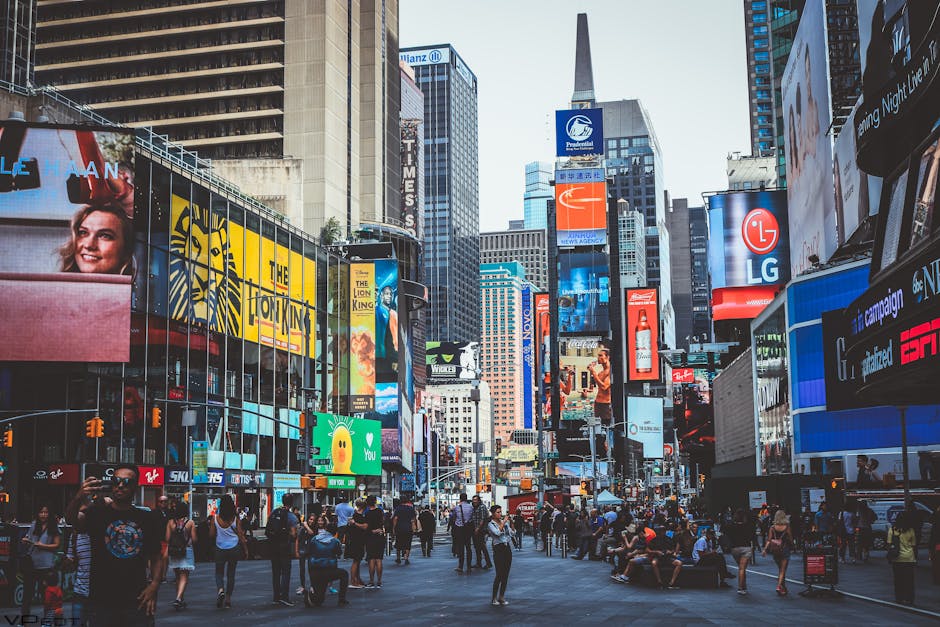⏱️ 4 min read
Top 10 Fun Facts About Broadway: Theater’s Most Fascinating Secrets
Broadway, the heart of American theater, has been entertaining audiences for over a century. This iconic stretch of New York City holds countless fascinating stories and surprising facts behind its glittering marquees and legendary performances. Here are ten incredible facts about Broadway that showcase its rich history and unique traditions.
1. The Great White Way’s Origin
Broadway’s famous nickname, “The Great White Way,” originated in 1880 when the street became one of the first in America to be illuminated by electric lights. The stretch between 42nd and 53rd Streets was so brightly lit by theater marquees and advertisement signs that it literally turned night into day, prompting a reporter from the New York Evening Telegram to coin the legendary nickname.
2. The Longest-Running Show Record
“The Phantom of the Opera” holds the record for the longest-running show in Broadway history, having opened on January 26, 1988, and concluding its historic run in April 2023 after 13,925 performances. During its 35-year run, the show was seen by more than 19 million people and grossed over $1.3 billion.
3. The Ghost Light Tradition
Every Broadway theater maintains the tradition of keeping a “ghost light” – a single bulb left burning when the theater is dark. While practically it serves as a safety measure, theater folklore suggests it’s meant to keep theater ghosts happy and give them light to perform their own shows at night. This tradition dates back to the early days of theater.
4. Broadway’s Technical Definition
Not every theater in New York City qualifies as a “Broadway theater.” To be considered a Broadway venue, a theater must have 500 or more seats and be located in the Theater District or Lincoln Center. Currently, there are 41 official Broadway theaters, most of which are actually not located on Broadway itself.
5. The Al Hirschfeld Theatre’s Lucky Seat
In the Al Hirschfeld Theatre, seat D101 is painted pink while all others are red. This seat honors playwright Neil Simon, who considered it his lucky spot and would always sit there during previews of his shows. The tradition continues to this day, and the seat remains a sought-after location for theater enthusiasts.
6. Tony Awards Etymology
The Tony Awards, Broadway’s highest honor, aren’t named after someone called Tony – they’re named after Antoinette Perry, an actress, director, and co-founder of the American Theatre Wing. The first Tony Awards ceremony was held in 1947 at the Waldorf Astoria Hotel, and the medallion given to winners features masks of comedy and tragedy.
7. Broadway’s Economic Impact
Broadway contributes significantly to New York City’s economy. In a typical year, Broadway shows collectively generate more revenue than all of New York City’s professional sports teams combined. The industry contributes approximately $14.7 billion to the city’s economy and supports 96,900 jobs.
8. The Tuesday Night Phenomenon
Broadway shows traditionally have their opening nights on Tuesdays. This tradition began because The New York Times’ theater reviews were published on Wednesdays, and producers wanted their shows to be reviewed as quickly as possible. Even today, many shows maintain this tradition despite the changing media landscape.
9. The Belasco Theatre’s Unique Feature
The Belasco Theatre features a unique architectural element: a working elevator stage. This hydraulic elevator could raise or lower the entire stage, and while it’s no longer used for performances, it remains operational. The theater is also famous for being allegedly haunted by its namesake, David Belasco, who lived in an apartment above the theater.
10. The Stage Door Tradition
The tradition of stage door autographs began in the early 20th century and has become an integral part of Broadway culture. Performers often exit through the stage door after performances to meet fans, sign playbills, and take photos. This tradition has created some of Broadway’s most memorable fan experiences and helped build strong connections between performers and audiences.
Conclusion
From its illuminated beginnings as The Great White Way to its modern-day traditions and economic impact, Broadway continues to captivate audiences and create theatrical history. These ten facts only scratch the surface of what makes this entertainment district so special. Whether it’s the ghost lights keeping spirits company, the pink seat honoring Neil Simon, or the enduring traditions that connect performers with their audiences, Broadway remains a unique cultural treasure that continues to evolve while honoring its rich history.


